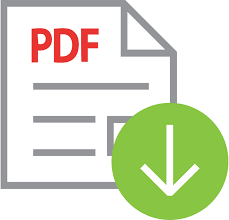A Study on Lexical and Phonetic-Phonological Comparison of Jujun and Keluru Speech Differences of Danau Kerinci Dialect of Kerincinese
 ), Jufrizal Jufrizal(2),
), Jufrizal Jufrizal(2), (1) Universitas Negeri Padang
(2) Universitas Negeri Padang
 Corresponding Author
Corresponding Author
Copyright (c) 2025 Moelin Mulya Andini
DOI : https://doi.org/10.24036/ell.v14i2.133760
Full Text:
 Language : en
Language : en
Abstract
Language changes and develops over the time. Language tends to be dynamic and diverse. It varies not only by region but also by culture, social class, and even age of some groups. This study aimed to analyze the differences on lexical and phonetic-phonological between Jujun and Keluru isolect of Danau Kerinci dialect of Kerincinese by using qualitative descriptive method. The study focused on the lexical and phonetic phonological features of Jujun and Keluru isolect. The data of this research was 207 words taken from Morris Swadesh and it collected from ten informants in total which were elder native speakers. This research used dialectometric formula from Mahsun (2005) to count the difference percentage from both isolect. The findings reveal that percentage of lexical differences in Jujun and Keluru isolect was 21.8%, and 86.5% for phonetic-phonological differences. Based on the percentage above, it can be concluded that lexical differences on Jujun and Keluru isolect categorized as speech difference while phonetic-phonological differences categorized as language differences according to Mahsun (2005) formulation. Both isolect has different vocabulary choices and different way in sound production.
Keywords
References
Allan, K. (2016). The Routledge Handbook of Linguistics. In The Routledge Handbook of Linguistics. https://doi.org/10.4324/9781315718453
Afria, R. (2014). Inovasi Fonologis Isolek Kerinci di Kecamatan Bukitkerman (Doctoral dissertation, Tesis). https://doi.org/10.47269/gb.v3i1.9
Afria, R. (2019). Lexical variation of isolects in three villages in Bukitkerman District, Kerinci District: A dialectology. Genta Bahtera: Jurnal Ilmiah Kebahasaan dan Kesastraan, 5(2), 1–21.
Chaer, A. (2013). Fonologi Bahasa Indonesia. Dalam A. Chaer, Fonologi Bahasa Indonesia (hal. 34 dan 57). Jakarta: Rineka Cipta
Chambers, J. K., & Trudgill, P. (1998). Dialectology (2nd ed.). Cambridge University Press.
Davenport, M., & Hannahs, S.J. (2005). Introducing Phonetics and Phonology (2nd ed.). Routledge. https://doi.org/10.4324/9781351042789
Hanie, N., & Jufrizal, J. (2024). The Linguistic Status of Bahasa Tansi in Sawahlunto. English Language and Literature, 13(3), 694-704.
Harmedianti, H., Ernanda, E., & Afria, R. (2023). Variasi Leksikal Bahasa Kerinci Isolek Desa-desa di Kecamatan Depati Tujuh Kabupaten Kerinci: Kajian Dialektologi. Kajian Linguistik Dan Sastra, 1(3), 257–270. https://doi.org/10.22437/kalistra.v1i3.20307
Knupfer, N. N., & McLellan, H. (1996). Descriptive research methodologies. Handbook of research for educational communications and technology, 1196.
Mahsun, M. S. (2005). Metode penelitian bahasa: tahapan strategi, metode dan tekniknya. PT RajaGrafindo Persada
Peta bahasa kemendikbud RI. (2017). Peta Bahasa. 1–13.
Trudgill, P., & Chambers, J. K. (1980). Dialectology. Cambridge: Cambridge University Press.
Wardhaugh, R. and J. M. F. (2015). An Introduction to sociolinguistic (7th ed., Issue 112). wiley blackwell.
 Article Metrics
Article Metrics
 Abstract Views : 36 times
Abstract Views : 36 times
 PDF Downloaded : 10 times
PDF Downloaded : 10 times
Refbacks
- There are currently no refbacks.
Copyright (c) 2025 Moelin Mulya Andini

This work is licensed under a Creative Commons Attribution-NonCommercial 4.0 International License.












